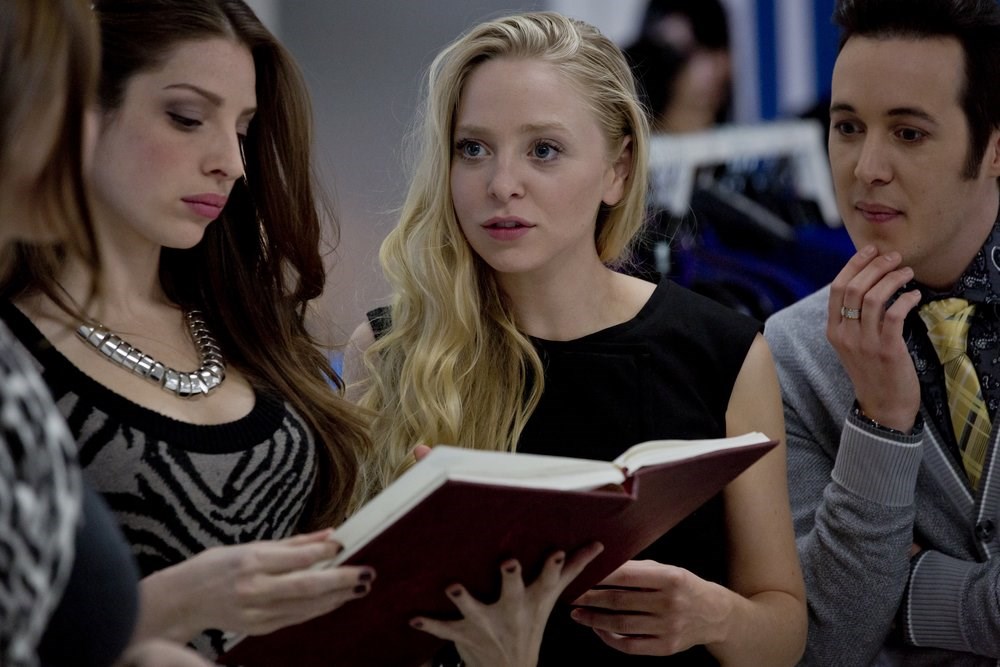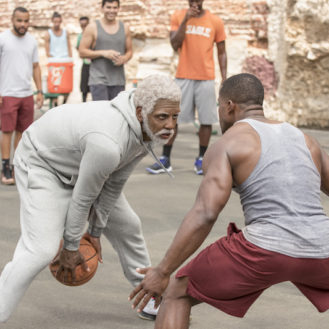By: Addison Wylie
I went into After the Ball already admiring three of its main stars: director Sean Garrity, co-writer Kate Melville, and actress Portia Doubleday. After the Ball isn’t a type of film I get excited to see, but these are three people I’ve been wanting to see more of ever since they’re strong debuts.
Garrity impressed me with his slow burn drama Blood Pressure, yet temporarily lost me when his filmmaking pizazz was squandered on My Awkward Sexual Adventure. Doubleday has always had an alluring girl-next-door presence to her that limp comedies such as Youth in Revolt and Big Mommas: Like Father, Like Son failed to tap into. Melville has the cleanest slate with her lone work on Picture Day, a wonderful coming-of-age flick.
It turns out that these three players all deliver when they all have high ambitions, such as the case with After the Ball – a refreshing twist on Cinderella with a dash of 13 Going On 30 flashy world of fashion and the gender-swapping in She’s the Man.
Doubleday plays Kate, a fashion designer who is down on their luck and struggling with her competitive career. She’s given an option to work for her father’s designer business, but is forced to work under her nasty stepmother Elise (played by Lauren Holly) and stepsisters Simone and Tannis (played by Anna Hopkins and Natalie Krill).
Kate finds common ground with a hunky shoemaker (played by Marc-André Grondin) and a flamboyant co-worker (played by a distracting, uncontrolled David Michael). But after a scandal at the company, Kate is canned and is given another option: to seek redemption as an alter ego.
After the Ball is charming in an innocuous way, which is exactly what this sort of fluffy fare needs to be.
Melville and co-writer Jason Sherman thankfully hesitate from hammering in fairy tale motifs within their modern day settings, and allow Kate’s determination and dreams to mirror Cinderella’s. The only obvious nods are the inclusions of an evil stepmother and stepsisters, which is okay. Mostly because Elise and her daughters are so delightfully mean, they could make a Kardashian kry.
Garrity’s filmmaking matches the film’s playful mood, but I was particularly impressed when he allowed himself to be creative. When Kate is drawing up ideas of designs, he lets her illustrations fill the negative space around her. We see her ideas attach themselves to other thoughts. It was a manoeuvre he applied in Blood Pressure that helped fill in the background, and it feels entirely new in this context as well. It’s a directorial signature that works for Garrity.
After the Ball is an eighty minute movie stretched out to fill an unobtainable hour-and-forty-minutes. With a little editing to some redundant conversations and the removal of a few montages, Garrity could’ve had a tighter vehicle. Still, After the Ball is a pleasing romantic comedy that disarms and delights.
**********
After the Ball is now available on VOD (iTunes, BELL, Telus, Rogers, and SHAW).





Leave a comment